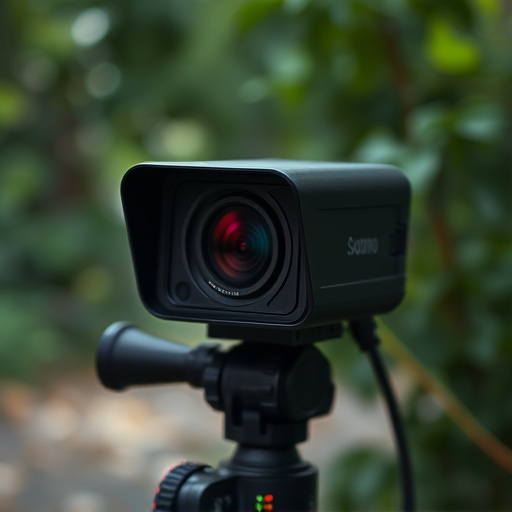In today's digital era, protecting privacy and security is paramount, leading to the rise of counter surveillance techniques. A key tool in this field is the Nanny Cam With Sound Recording, which allows for discreet monitoring with audio capabilities. Professionals use advanced technologies like infrared cameras, motion sensors, RF detection, signal jamming, and reverse engineering to detect hidden listening devices. Sweeps require meticulous assessment, equipment detection, neutralization of surveillance devices, and post-sweep analysis to identify gaps or vulnerabilities. Following analysis, protocols are enhanced with tech upgrades and occupant education to deter sophisticated techniques like those utilized by Nanny Cam With Sound Recording devices.
In an era where privacy is increasingly fragmented, understanding counter surveillance is paramount for individuals and organizations alike. This comprehensive guide explores professional methods for conducting counter surveillance sweeps, focusing on tools like a nanny cam with sound recording. From recognizing advanced techniques to implementing robust post-sweep analysis, this article equips readers with vital knowledge to enhance security measures and protect sensitive information in today’s digital landscape.
- Understanding Counter Surveillance: Tools and Techniques
- Implementing a Professional Counter Surveillance Sweep
- Post-Sweep Analysis and Security Measures Enhancement
Understanding Counter Surveillance: Tools and Techniques
In today’s digital era, counter surveillance has become a critical aspect of maintaining privacy and security. Understanding the various tools and techniques employed in this field is essential for professionals aiming to conduct effective sweeps. One key tool that has gained prominence is the Nanny Cam With Sound Recording. These miniature cameras, often disguised as everyday objects, offer discreet monitoring capabilities with the added feature of sound recording, providing a comprehensive view of an area’s activity.
The techniques surrounding counter surveillance are diverse and sophisticated. Professionals employ advanced technology such as infrared cameras for night vision, motion sensors to trigger recordings, and radio frequency (RF) detection to uncover hidden listening devices. Additionally, they utilize expertise in signal jamming to disrupt communication signals and reverse engineering to analyze and counteract complex surveillance systems. These methods ensure that every angle is covered during a sweep, making it a comprehensive guide for professionals in the field.
Implementing a Professional Counter Surveillance Sweep
Implementing a professional counter surveillance sweep requires a meticulous approach, especially when utilizing advanced tools like a nanny cam with sound recording. The first step is to conduct a thorough assessment of the area to be swept, identifying potential hidden cameras or other surveillance devices. This involves visually inspecting every corner and crevice, including walls, ceilings, and floors, as well as electronic equipment and furniture. Using specialized equipment and trained eyes, professionals can detect even the smallest signs of unauthorized monitoring.
Once the assessment is complete, a strategy is devised to neutralize any detected surveillance equipment. This might involve physically removing hidden cameras or deactivating them using technical means. In the case of a nanny cam with sound recording, specialists will ensure that all audio and visual data are securely erased, preventing any potential misuse of recorded information. The process demands discretion and expertise to avoid raising suspicions while ensuring the sweep’s effectiveness.
Post-Sweep Analysis and Security Measures Enhancement
Post-sweep analysis is a critical step in any counter-surveillance operation, providing an opportunity to review collected data and identify potential gaps or vulnerabilities. This process involves meticulously examining all evidence, including footage from nanny cams with sound recording capabilities, to ensure no trace of surveillance devices has been overlooked. By cross-referencing findings with initial sweep results, professionals can pinpoint areas where security measures may have been compromised.
Following the analysis, enhancing security protocols should be a priority. This might include implementing advanced technology such as signal jammers or motion-activated alarms to disrupt potential future surveillance attempts. Additionally, educating occupants about the importance of regular privacy checks and maintaining a culture of awareness can significantly deter would-be intruders from employing sophisticated surveillance techniques, like those detected by nanny cams with sound recording features.
In light of the evolving landscape of surveillance technology, understanding and implementing effective counter surveillance methods is paramount. This guide has provided an in-depth look at tools, techniques, and best practices for conducting professional counter surveillance sweeps. By utilizing innovative tactics such as a nanny cam with sound recording, individuals and organizations can protect their privacy and security. Remember that staying one step ahead of potential threats ensures a safer environment, so continue to enhance your security measures post-sweep to maintain a robust defense against unwanted intrusions.
